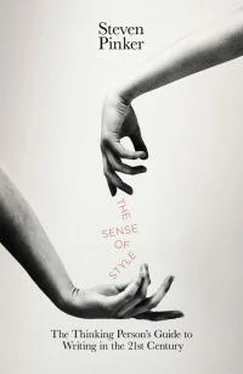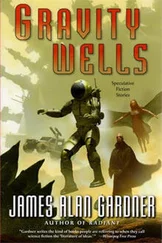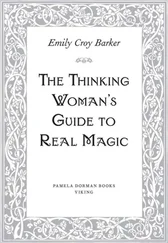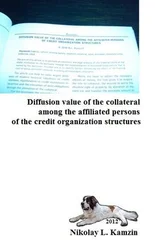So which guideline should a writer follow, “Avoid elegant variation” or “Don’t use a word twice on one page”? Traditional style guides don’t resolve the contradiction, but psycholinguistics can help. 9Wording should not be varied capriciously, because in general people assume that if someone uses two different words they’re referring to two different things. And as we shall soon see, wording should never be varied when a writer is comparing or contrasting two things. But wording should be varied when an entity is referred to multiple times in quick succession and repeating the name would sound monotonous or would misleadingly suggest that a new actor had entered the scene.
When wording is varied, only certain variations will be easy for the reader to track. The second label is acting as a pseudo-pronoun, so it should be pronounish in two ways. First, it should be more generic than the original noun, applying to a larger class of entities; that’s why the first of these two sequences (which were used in an experiment on understanding stories) is easier to understand than the second:
A bus came roaring around a corner. The vehicle nearly flattened a pedestrian.
A vehicle came roaring around a corner. The bus nearly flattened a pedestrian.
Also, the second label should easily call to mind the first one, so that readers don’t have to rack their brains figuring out who or what the writer is talking about. A bus is a typical example of a vehicle, so the backward association from vehicle to bus is effortless. But if the first sentence had been A tank came roaring around the corner, which refers to an atypical example of a vehicle, a reader would have had a harder time making the connection. One of the reasons that O’Connor avoided referring to the herons as birds is that a heron is not a typical example of a bird, so readers would not have readily thought “heron” when they saw the word bird . It would be another thing if the column had been about sparrows.
In chapter 2 I promised to explain what zombie nouns like anticipation and cancellation (as opposed to anticipate and cancel ) are doing in the English language. The main answer is that they serve the same role as the pronouns, definite articles, and generic synonyms we have just examined: they allow a writer to refer to something a second time (in this case a situation or an event rather than a person or a thing) without tedium or confusing repetition. Suppose we begin a passage with The governor canceled the convention today. At this point it’s more coherent to continue it with The cancellation was unexpected than with It was unexpected that the governor would cancel the convention or The fact that the governor canceled the convention was unexpected. So zombie nouns do have their place in the language. The problem with them is that knowledge-cursed writers use them on first mention because they, the writers, have already been thinking about the event, so it’s old hat to them and is conveniently summarized by a noun. They forget that their readers are encountering the event for the first time and need to see it enacted with their own eyes.
In addition to a consistent thread of sentence topics and an orderly way of referring to repeated appearances, there is a third arc of coherence spanning sentences, and that is the logical relationship between one proposition and another. Let’s go back to some examples from the chapter opening. What’s so confusing about this sequence?
It’s an advantage for herons to avoid the dangers of migration. Herons head south when the cold weather arrives.
And what’s so funny about these?
The patient has been depressed ever since she began seeing me in 2008.
Miss Charlene Mason sang, “I Will Not Pass This Way Again,” giving obvious pleasure to the congregation.
In the doctored passage about herons, the second sentence is a non sequitur: we can’t understand why the author is telling us that the birds migrate south just after saying that herons should avoid the dangers of migration. In the original passage, the two statements appeared in the opposite order, and the author connected them with the sentence noting that a few herons come to Cape Cod, where the winters are not too cold. That sentence lays out two arcs of logical coherence: Cape Cod is an example of southward migration, and the fact that its winters are not too cold is an explanation of why some herons end up there. Readers might still expect herons to choose a warmer destination than Cape Cod—it may not be as cold as some places, but it’s a lot colder than others—so in his next sentence O’Connor acknowledges this violated expectation and supplies two explanations for the anomaly. One is that some herons (the young and inexperienced ones) may arrive on Cape Cod by accident. The other is that wintering at a relatively northern latitude has advantages that make up for the disadvantage of its coldness. O’Connor then elaborates on this explanation (that there are compensating advantages) with two specific advantages: it’s safer not to travel far, and the local herons have first dibs on the breeding grounds come spring.
Now let’s turn to the bloopers. The psychiatrist who wrote the first blooper presumably intended his second clause to convey a temporal sequence between two events: the patient saw the doctor, and since that time she has been depressed. We interpret it as a cause-and-effect sequence: she saw the doctor, and that made her depressed. In the second blooper, the problem does not lie in the relationship between clauses—it’s cause-and-effect in both interpretations—but in exactly what causes what. In the intended reading, the pleasure is caused by the singing; in the unintended one, it’s caused by the not-passing-this-way-again.
Examples, explanations, violated expectations, elaborations, sequences, causes, and effects are arcs of coherence that pinpoint how one statement follows from another. They are not so much components of language as components of reason, identifying the ways in which one idea can lead to another in our train of thought. You might think there are hundreds or even thousands of ways in which one thought can lead to another, but in fact the number is far smaller. David Hume, in his 1748 book, An Enquiry Concerning Human Understanding, wrote, “There appear to be only three principles of connections among ideas, namely Resemblance, Contiguity in time or place, and Cause or Effect .” 10The linguist Andrew Kehler argues that Hume basically got it right, though he and other linguists have subdivided Hume’s Big Three into about a dozen more specific kinds of connection. 11And more to the point for the language of coherence, they have shown how the connections among ideas are expressed as connections among sentences. The key linguistic couplers are connective words like because, so, and but. Let’s take a look at the logic of the coherence relations and how they’re typically expressed.
In a resemblance relation, a statement makes a claim that overlaps in content with the one that came before it. The most obvious two are similarity and contrast:
Coherence Relation
Example
Typical Connectives
Similarity
Herons live in the northern United States. Herons live in most of Canada.
and, similarly, likewise, too
Contrast
Herons have one thing in their favor: they are opportunistic hunters. Herons have one thing not in their favor: they defend a fishing hole even when it is frozen.
but, in contrast, on the other hand, alternatively
Читать дальше












